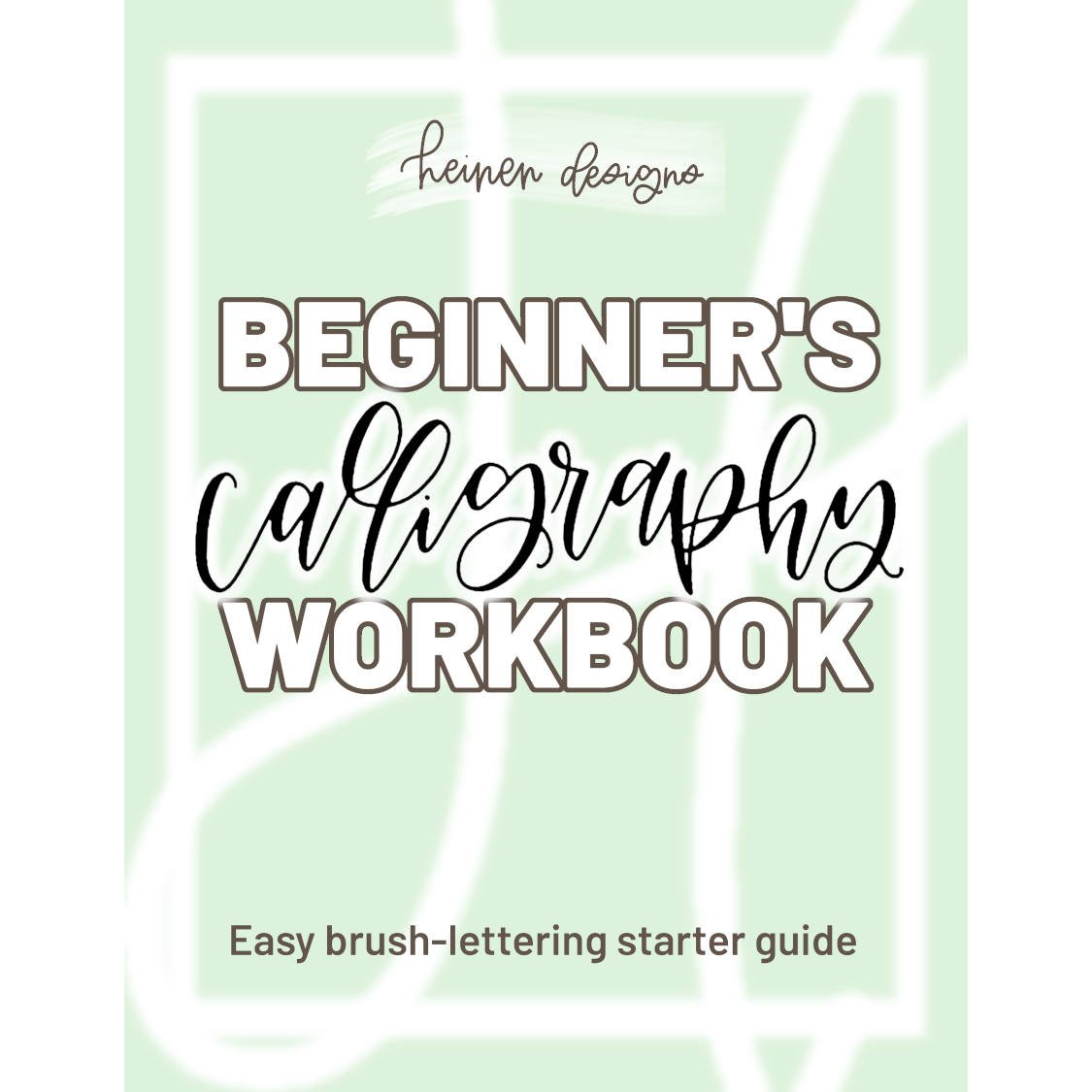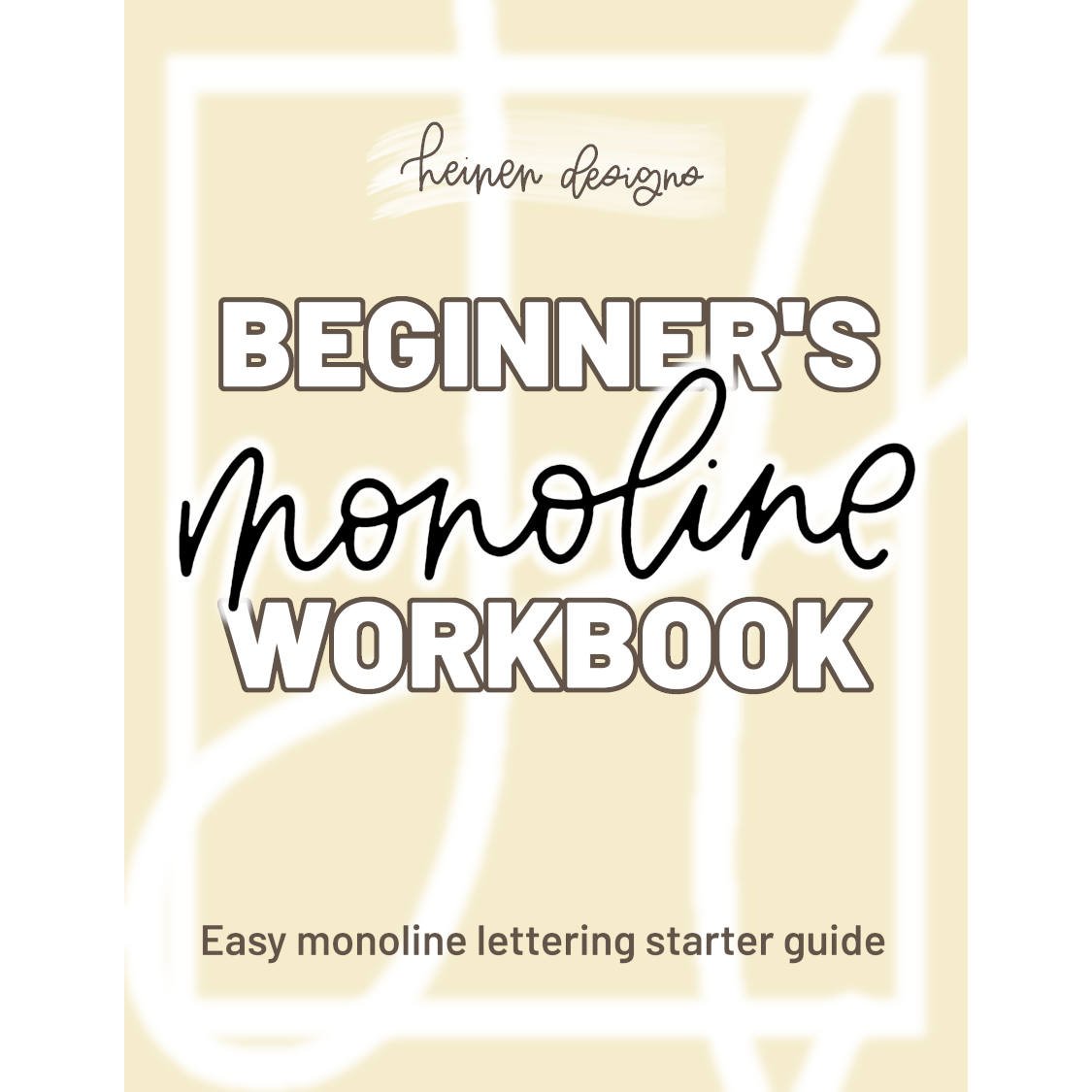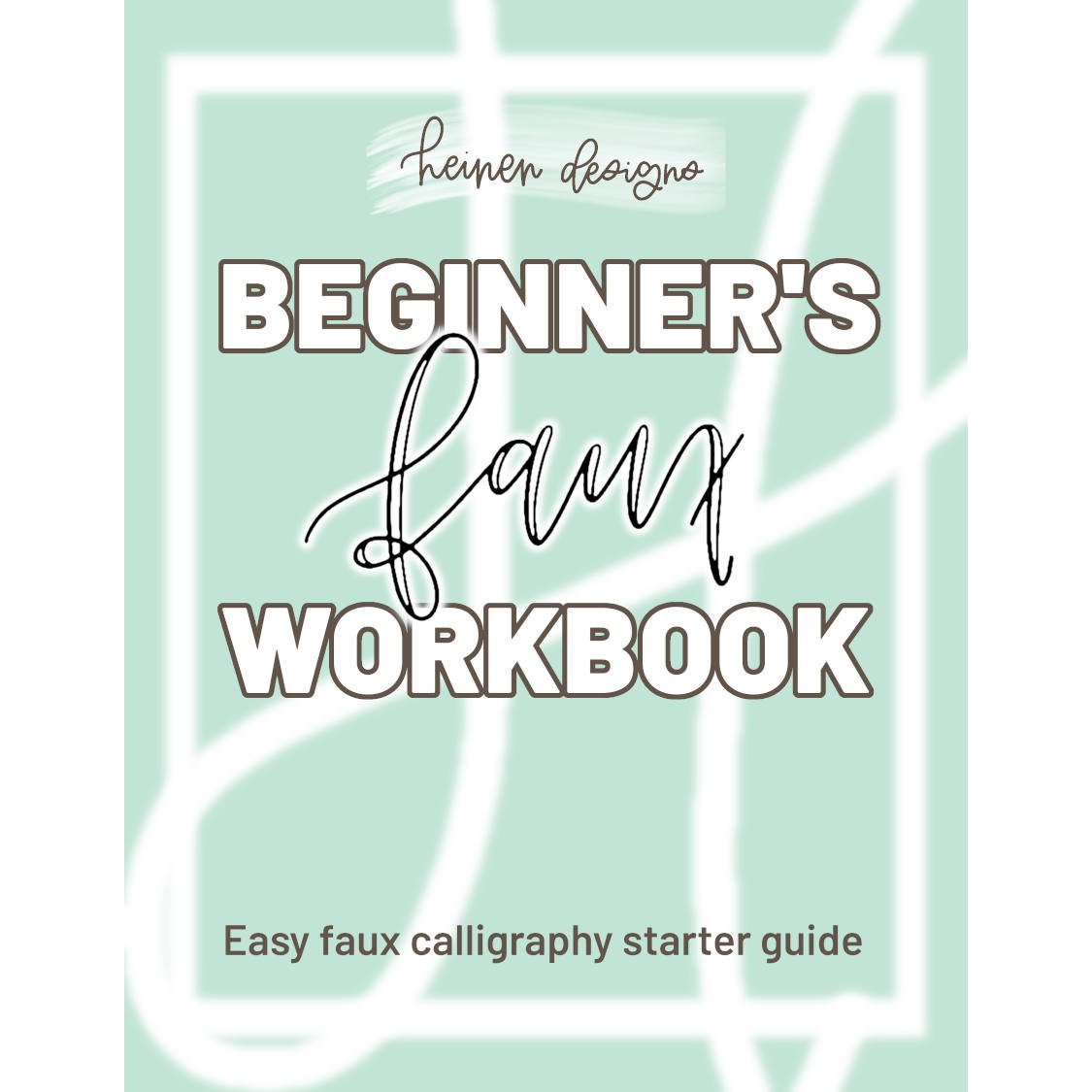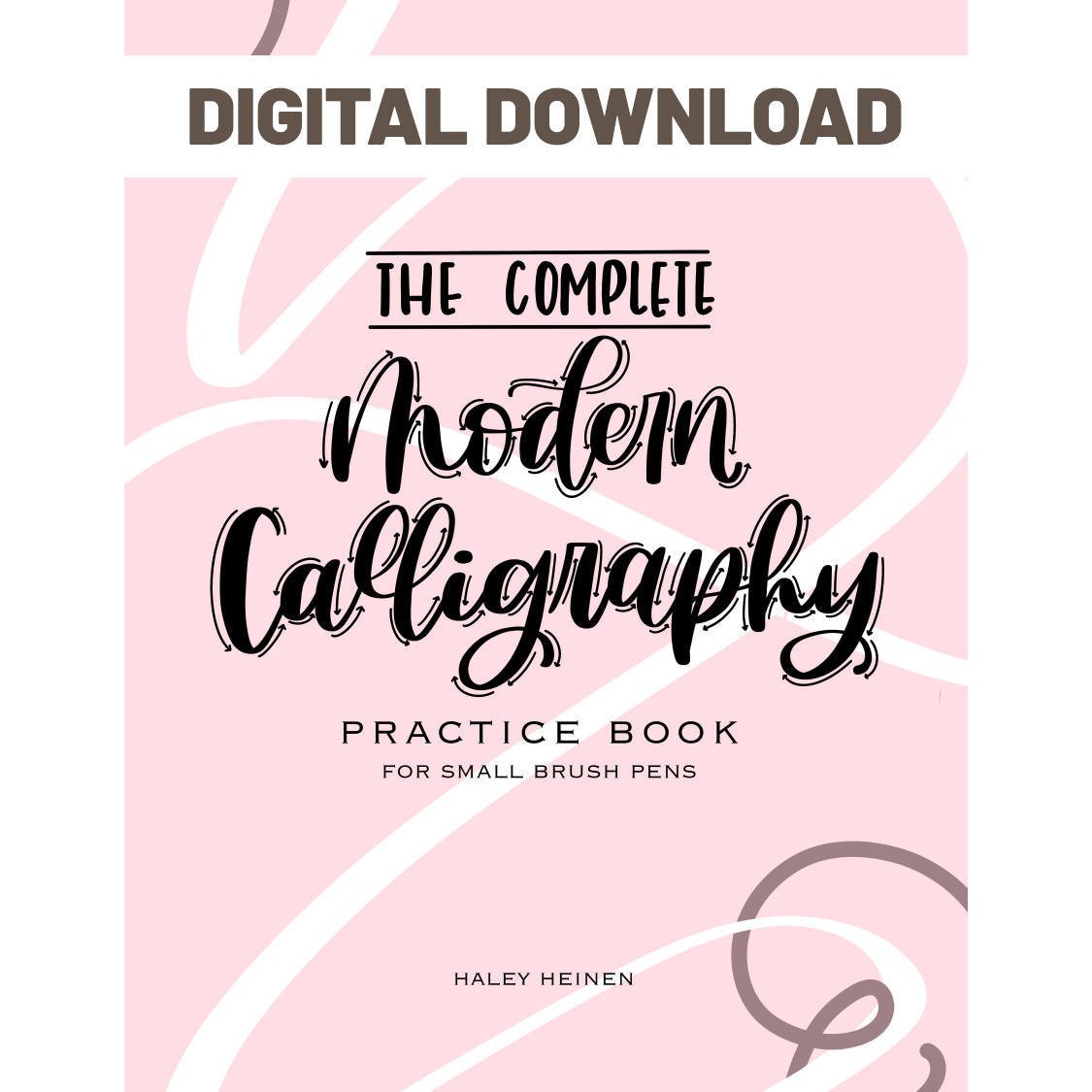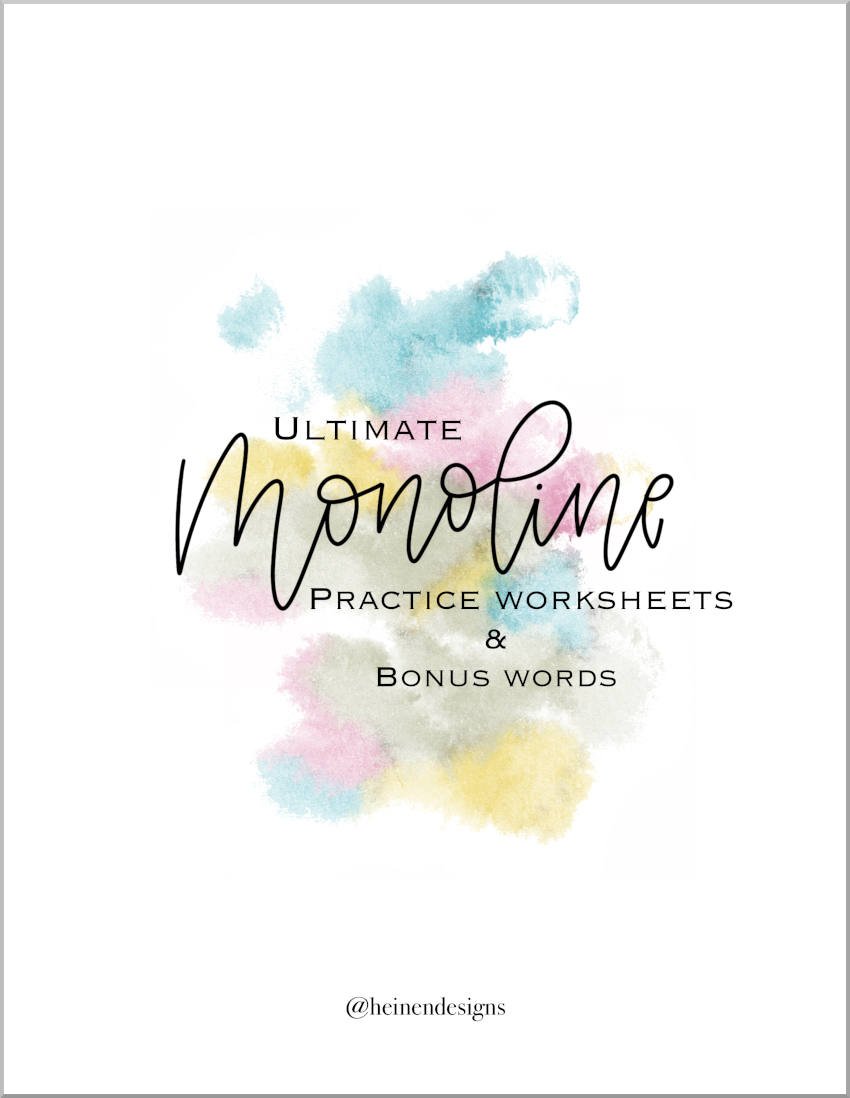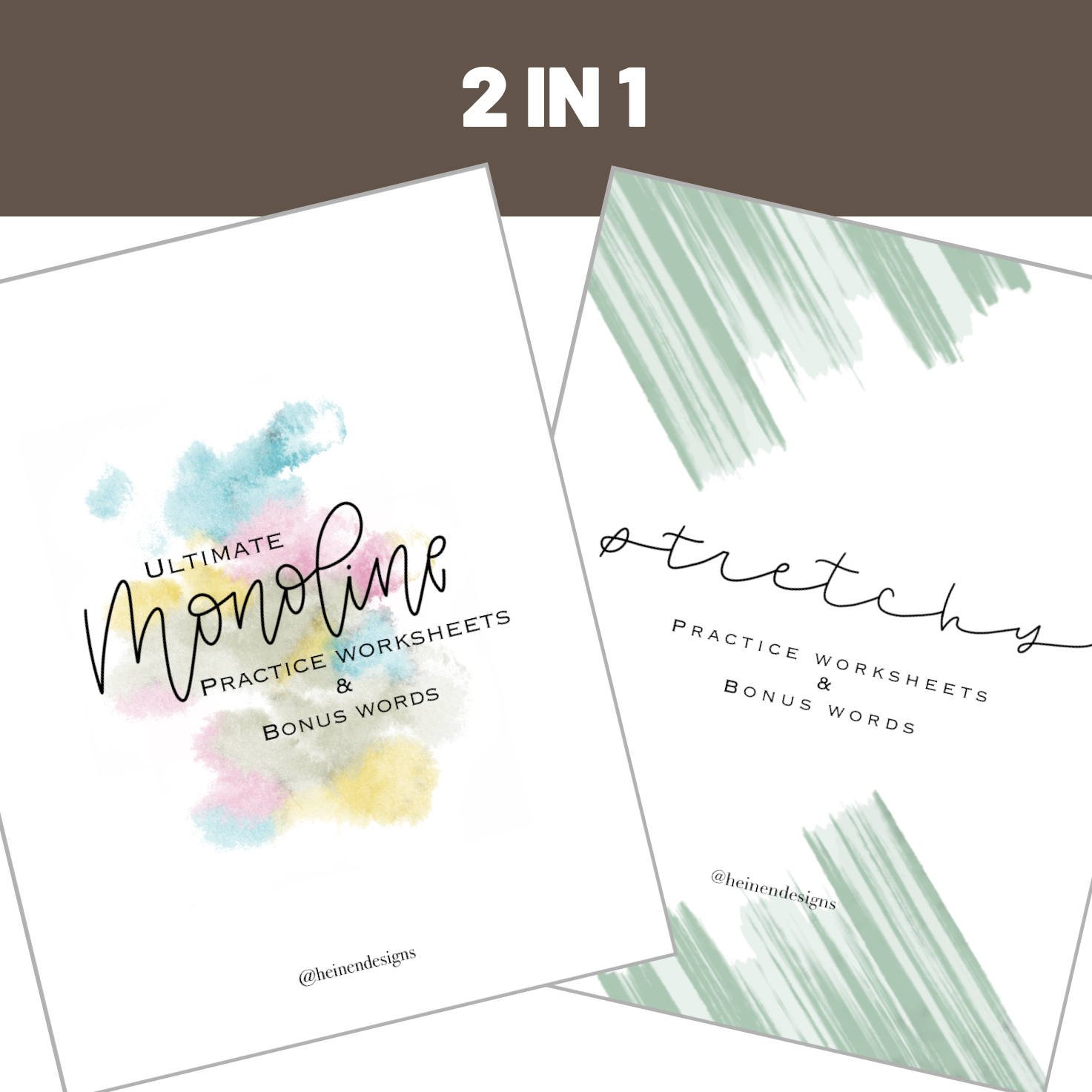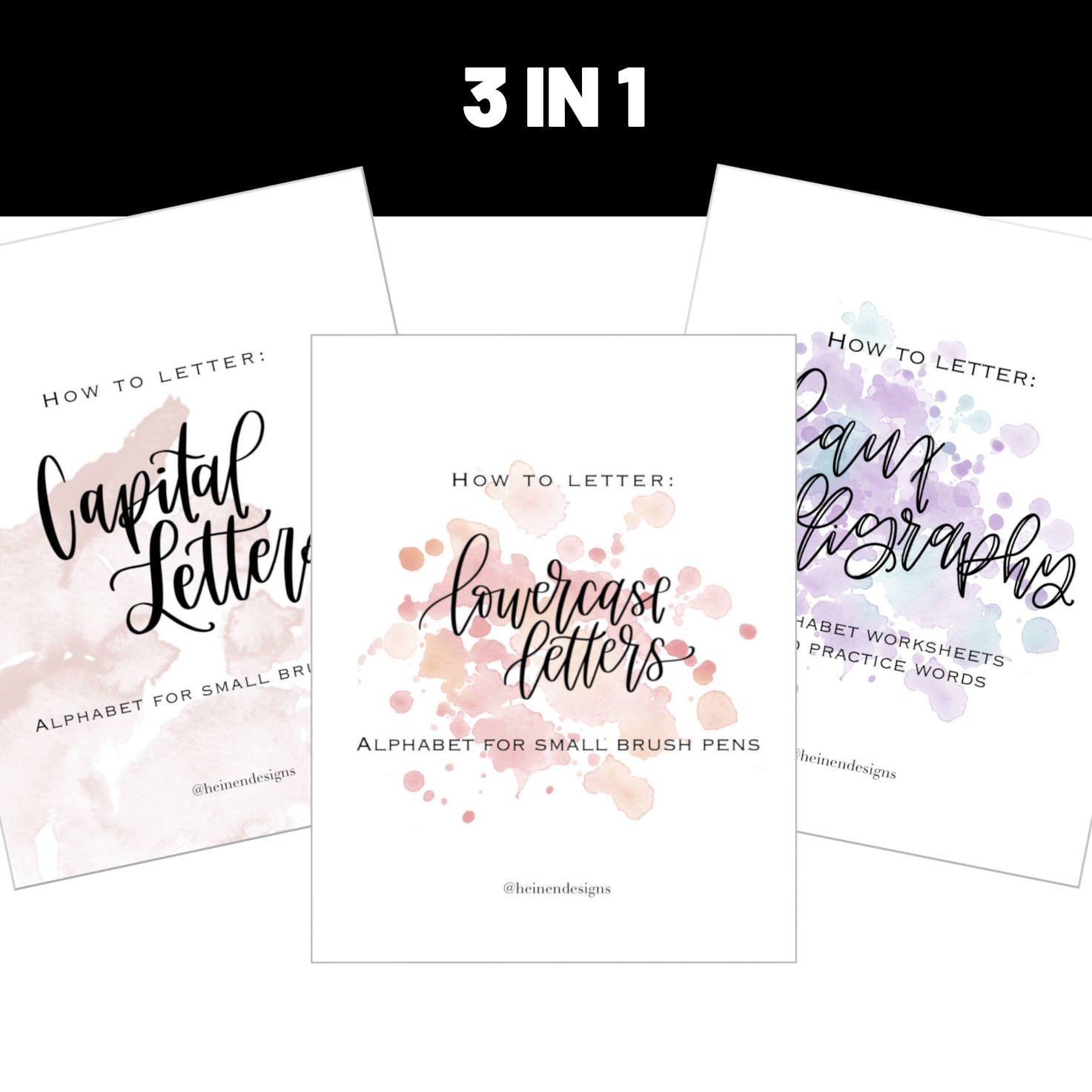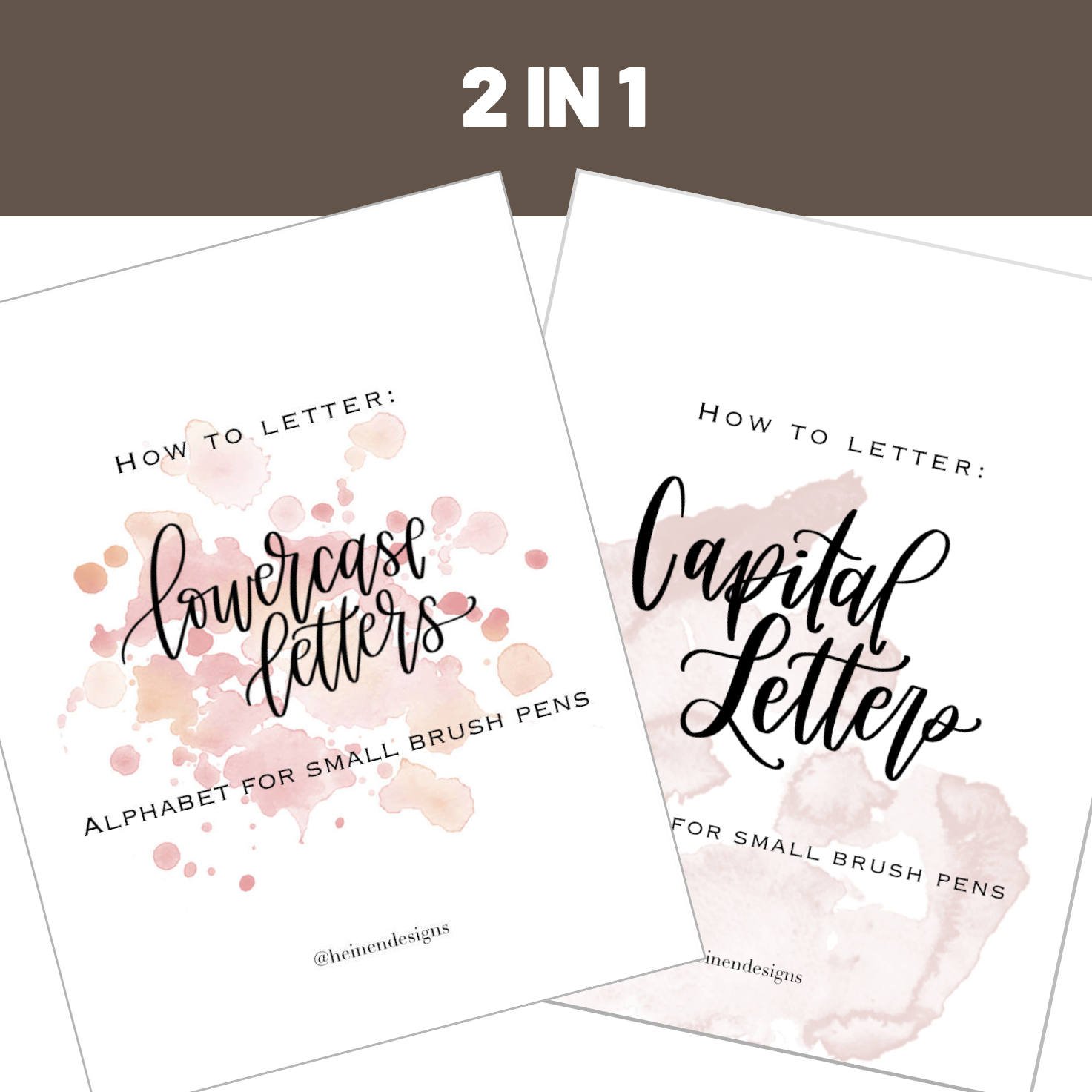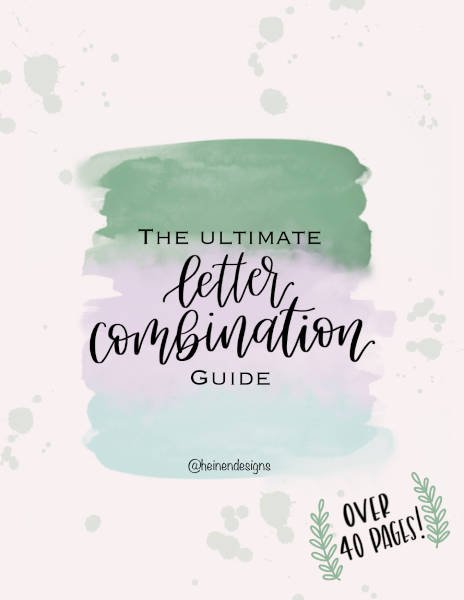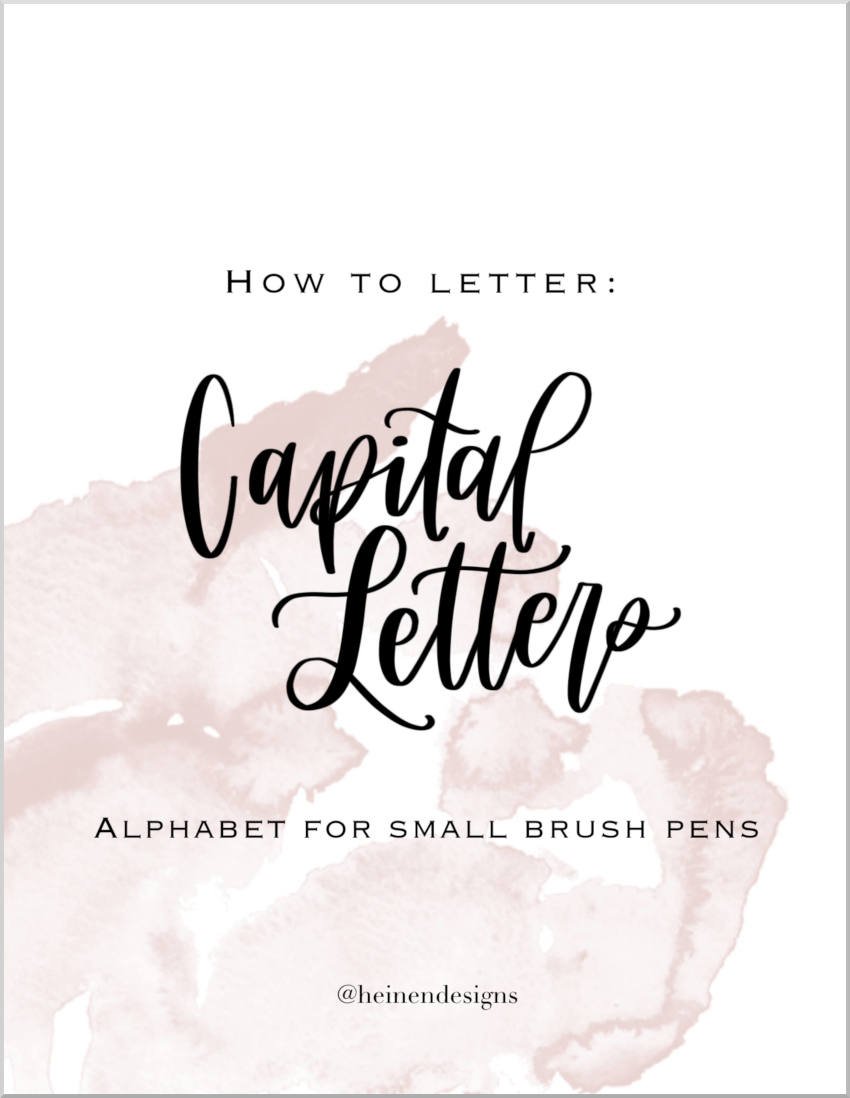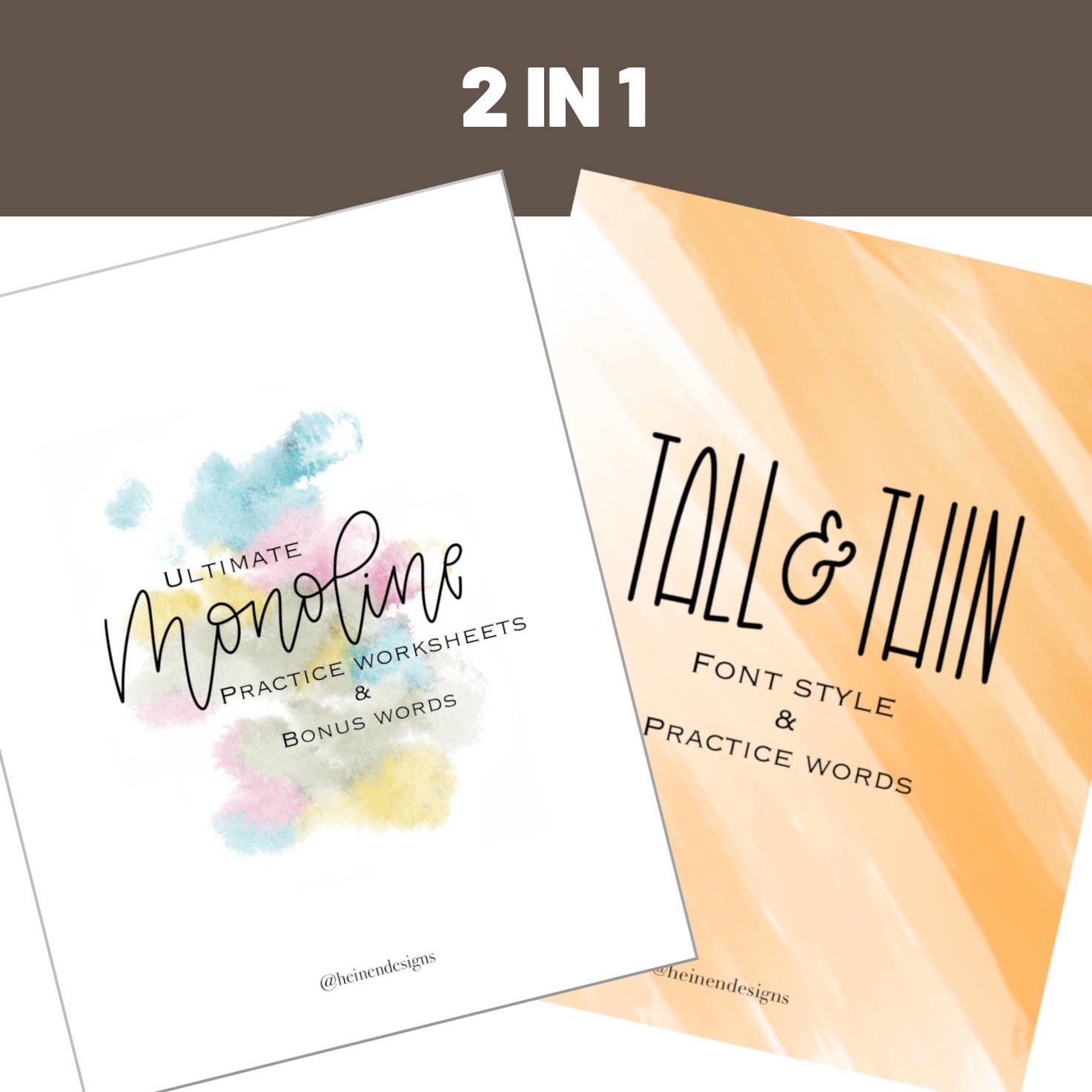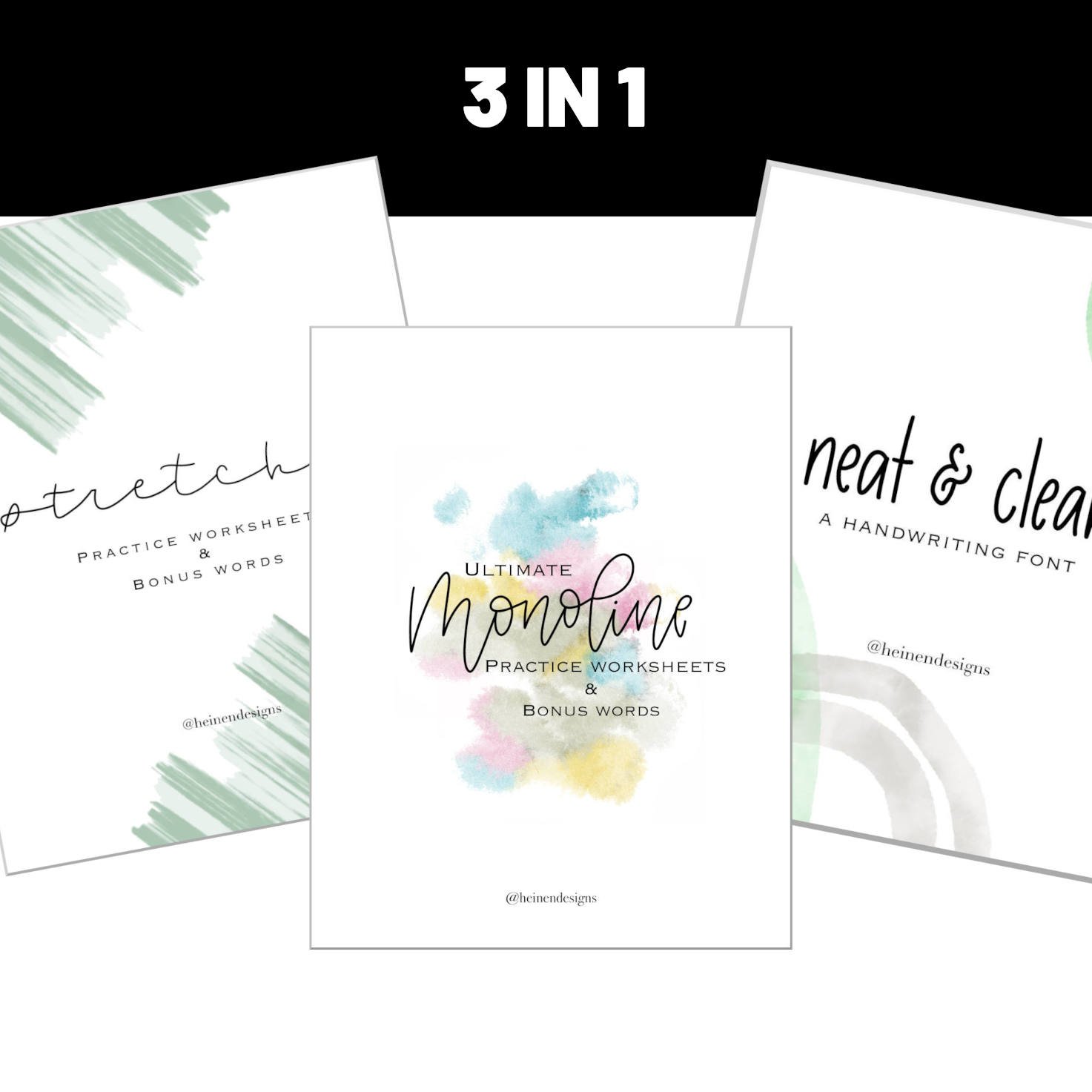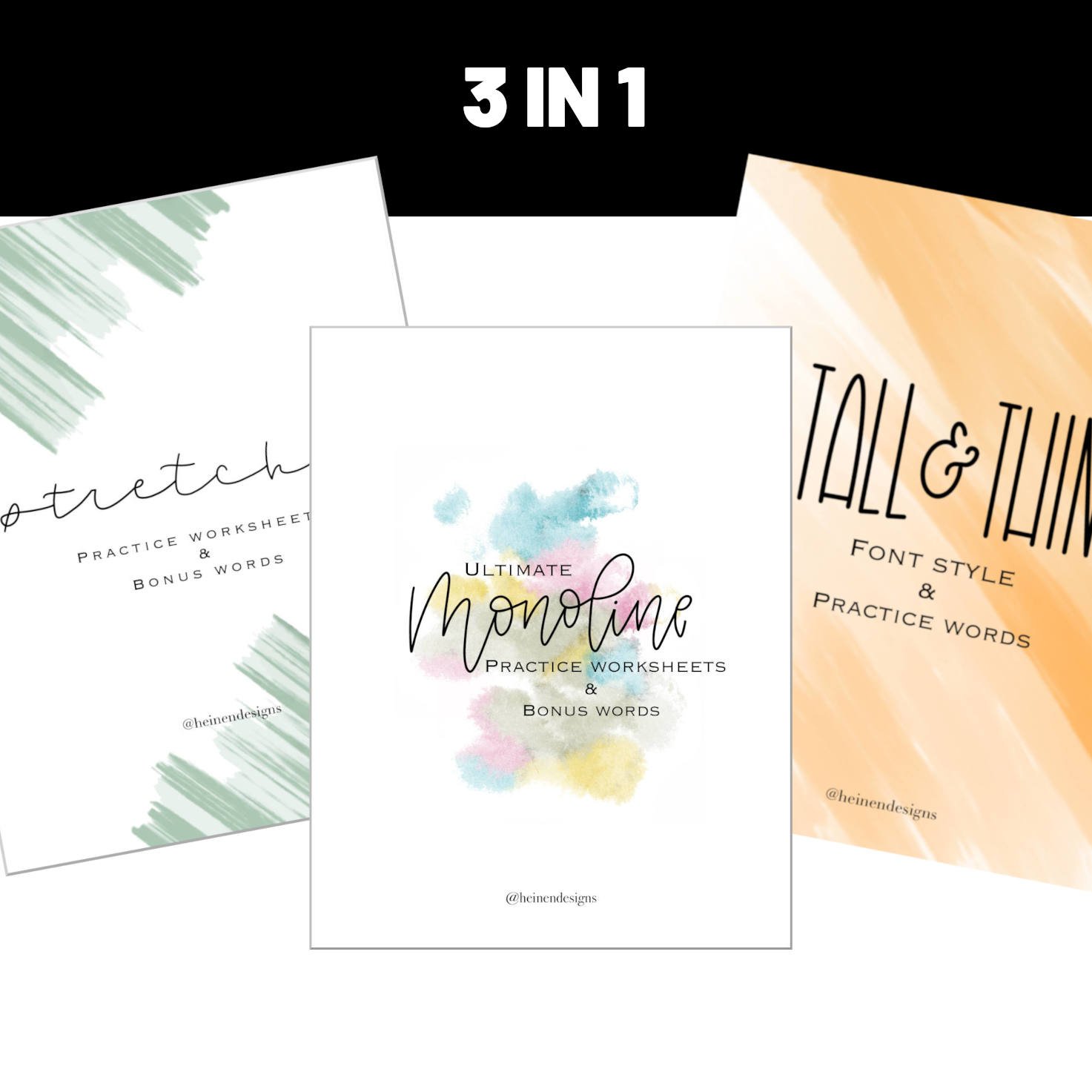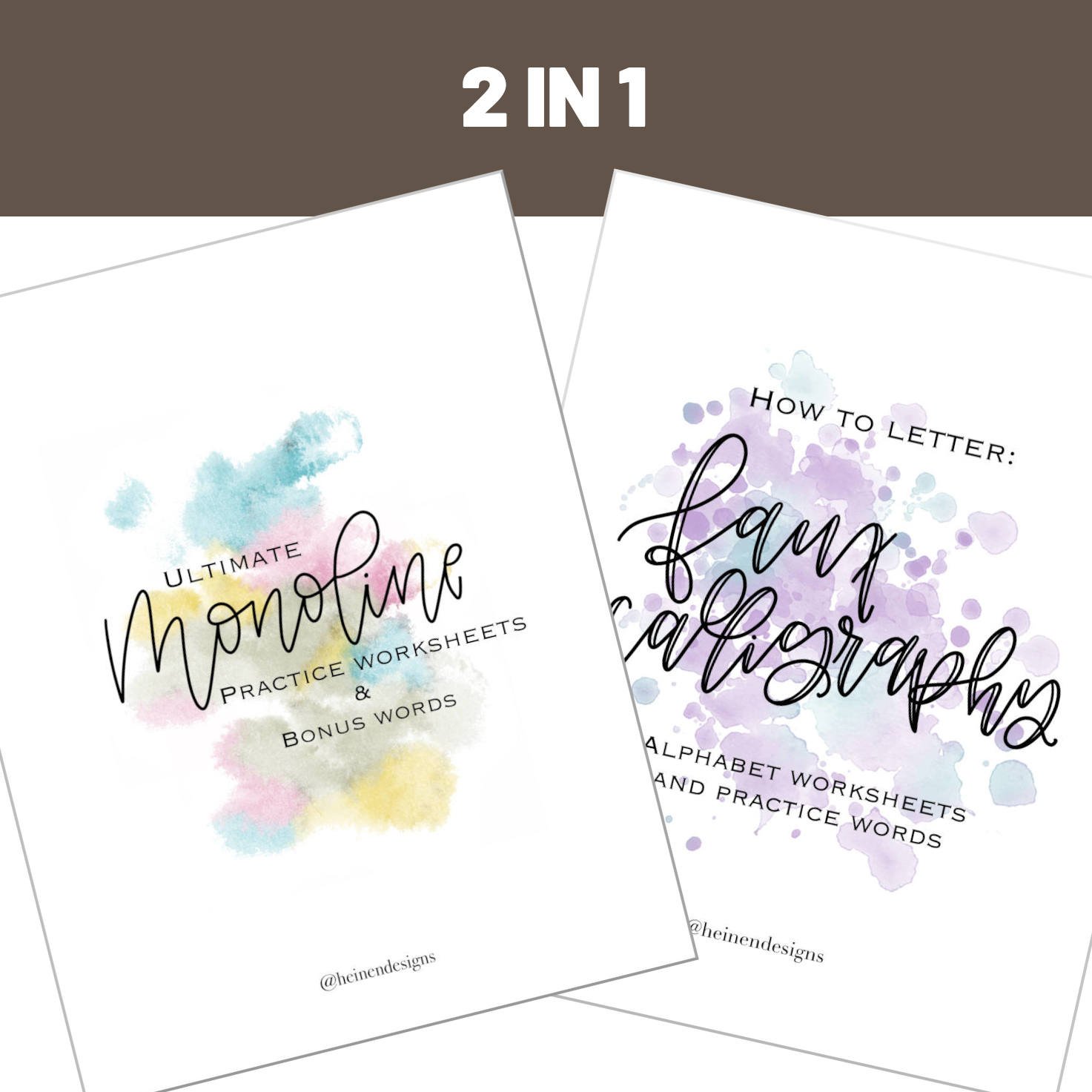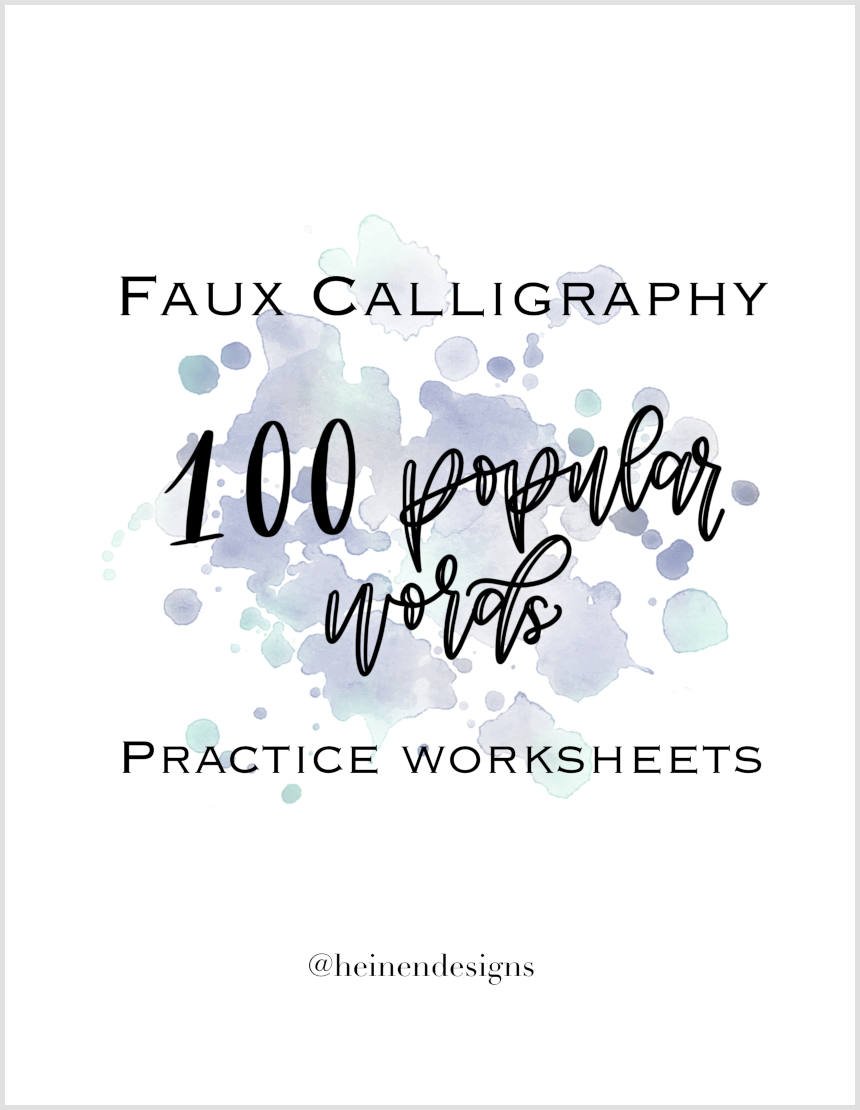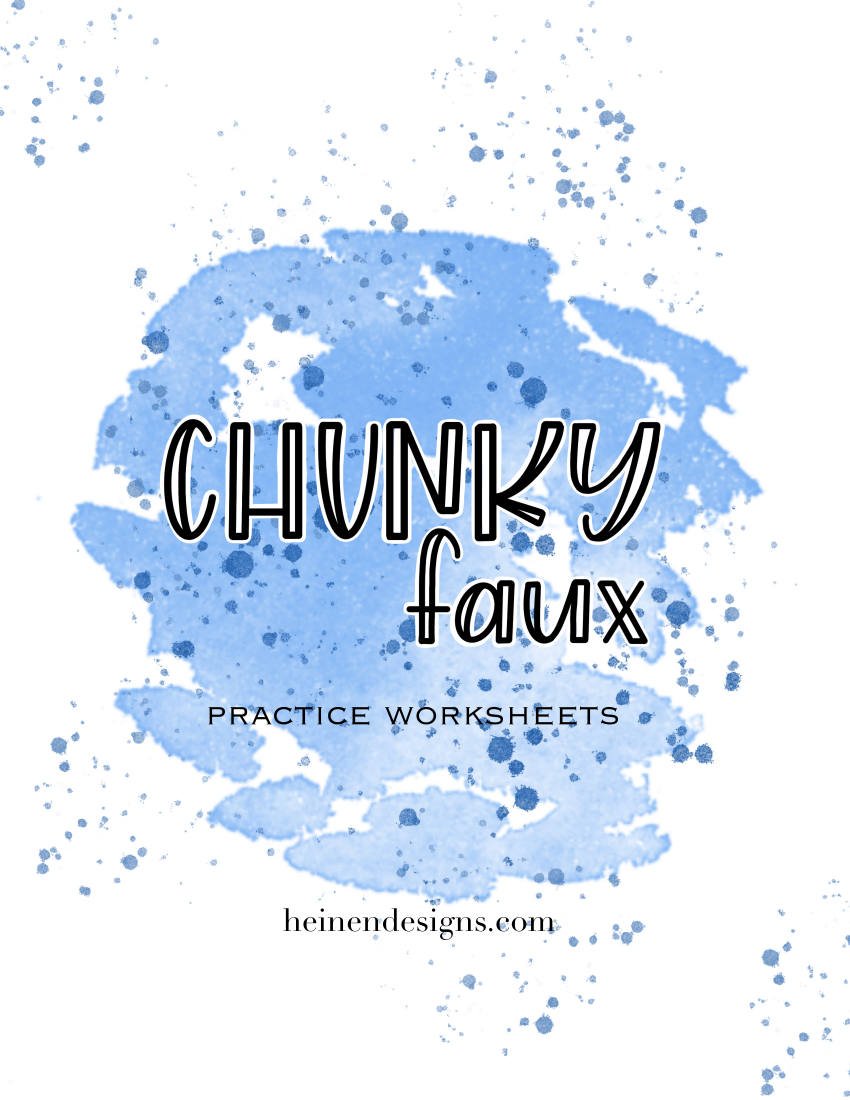How to Choose the Best Calligraphy Pen
Finding the right calligraphy pen — ah, the age-old problem — which pen is the best quality? Is it the right type of calligraphy pen for the lettering you’re doing? Do you even need a calligraphy pen? Or do you need a whole drawerful of different pens?
If you’re looking for guidance on sifting through all the different types of calligraphy pens and choosing the best calligraphy pen for your hand-lettering work, you’ve come to the right place! In this guide, we’ll talk about what a calligraphy pen actually is, types of calligraphy pens and what they’re used for, and some tips (pun intended!) for how to choose a calligraphy pen.
Tap to jump to a topic:
What is a Calligraphy Pen?
Let’s start with a definition. What is a calligraphy pen? A calligraphy pen is a special type of ink pen with a semi-flexible tip that is used for writing thick-to-thin strokes for calligraphy letters.
What makes a pen a calligraphy pen? Calligraphy pens can come in all shapes, sizes, and colors, but what is that defining characteristic? It all comes down to the tip (a.k.a. the “nib”). Unlike a ballpoint pen or rollerball pen or fineliner, a calligraphy pen or brush pen has a tip that’s bendable under pressure.
The more pressure that’s applied, the thicker the line becomes.
With this special pen tip, you can make thick-to-thin lettering strokes to form brush letters, the building blocks of all modern calligraphy.
That said…
Wait, What About Other Types of Calligraphy?
A proper calligraphy pen is one with a semi-flexible tip used for making thick-to-thin letters. However, in modern calligraphy, there are many different styles of lettering that are considered calligraphy – monoline, faux, tall and thin, etc.
So, the truth is, there are many other types of calligraphy pens beyond just the proper kind. Fineline pens, rollerball pens, even run-of-the-mill ballpoints pens could be used for calligraphy.
But, are they truly calligraphy pens?
Types of Calligraphy Pens
The purpose of this guide is to help you progress in your lettering journey. We want to provide you with some direction and arm you with some knowledge to choose a pen (or pens) that will give you confidence as an artist.
So, let’s draw a line in the sand. We’ll talk about the different types of pens that can be used in calligraphy, but then provide recommendations on which ones make the best instruments for good hand-lettering.
1. Brush Pen
The brush pen is the go-to pen for modern calligraphy. This type of pen, as we’ve already said, has a semi-flexible tip or nib that bends under pressure, creating a thick or thin line at the artist’s will. Some brush pens have shorter nibs (like the tip of a Sharpie, but smaller) and others have very long nibs, like a fine paintbrush. Nibs can also vary in their level of flexibility, from soft to hard, but we’ll discuss this more later.
Recommended Brush Pen for Calligraphy
The best brush pen for calligraphy is the Tombow Fudenosuke hard-tip. This pen uses water-based ink and a short, semi-rigid nib. The hard-tip nib is preferrable for brush lettering because it is less sensitive to pressure. With a soft tip, the slightest variation in pressure causes your line thickness to increase or decrease. This makes your lettering more prone to mistakes. With a hard-tip, the flexibility is less knee-jerk and more intentional. If you need to make a thicker downstroke, you must apply more intentional pressure, and if it’s a thinner stroke, the pen naturally defaults to its straightened position. There is still a learning curve – make no mistake – but the hard-tip provides the path of least resistance to achieving beautiful, consistent letters.
The Tombow brush pen is also affordable. You don’t need to invest $50 to $100 in a high-end writing instrument to get started. You can buy a whole set of them for $20 or less. And if you take good care of them and remember to use the cap, they’ll last quite a while.
Tombow Fudenosuke brush pens don’t have replaceable or refillable ink cartridges. They’re sealed tight, and once the ink runs out, the pen isn’t good for much other than throwing away. However, because they’re so affordable, this isn’t really a drawback.
Tombow pens are made in Vietnam, but they are extremely popular in the hand-lettering community and are readily available at Amazon or any number of arts and craft stores.
2. Fineliner Pen
A fineliner pen is a monoline pen, meaning writes with a single line thickness – no variations. While not used for brush-lettered calligraphy, the fineliner pen is a go-to choice for monoline calligraphy and faux calligraphy, among others. Fineliners have a felt or plastic tip that is nonflexible. Contrary to the name, the tip can be small and fine, or it can be larger, creating very bold lines.
Recommended Fineliner Pen for Calligraphy
The best fineliner pen for calligraphy is the Pigma Micron fineliner with the 05 tip. This type of pen has micro pigment ink that’s advertised to be waterproof and fade-proof. It’s an archival ink, meaning it’s meant to last for many, many years. The Micron even has an ACMI AP certification, being approved for safe use by a toxicology board.
The 05 specifically makes a line that measures at 0.45mm thick. Again, this type of pen, like all fineliners, is a monoline pen – one line thickness only. That makes them great for monoline lettering, including all of the related monoline fonts, as well as faux lettering, which mimics the look of brush lettering but uses a monoline technique.
Micron pens are made by the Sakura Color Products Corporation based in Japan. However, these pens are also very popular, like the Tombow, and they can be found prevalently online and at most craft stores.
3. Rollerball Pen
A rollerball pen is a type of pen with a tiny ball in the tip that rolls (hence the name) as it is drawn across the page. The ball is made of metal or plastic. Some rollerball pens have a stick-like tip, while others have a classic pointed or angled tip. Some are retractable with a clicker mechanism. Others come with a cap.
A rollerball pen is a monoline pen, like the fineliner. The tip allows for a singular line thickness, and while rollerballs cannot be used for brush lettering, they make an excellent choice for monoline fonts, faux calligraphy, and other styles.
Recommended Rollerball Pen for Calligraphy
The best rollerball pen for calligraphy is the Pilot Precise V5, specifically the stick pen version with liquid ink. This pen has an extra fine tip, making a thin, monoline stroke that measure 0.5mm thick. The liquid, water-based ink makes for very smooth and consistent lines, but keep an eye out for smudges. You’ll need to wait for the ink to dry for a moment or you might ruin your finished piece.
The Pilot V5 rolling ball pen comes in a million other options as well – different colors of ink, different line weights, clicky tops. For hand-lettering, the stick pen version is the best. It’s lightweight, smooth, and consistent. It comes with a cap to protect the tip from drying out, and the cap has a highly dependable metal clip as an added bonus.
4. Ballpoint Pen
Similar to a rollerball pen, a ballpoint pen has a ball in the point or tip (imagine that!). This metal or plastic ball rolls as the tip is drawn across the page, and ink is laid down in a singular, monoline line thickness.
Ballpoint pens are not as smooth as rollerball pens, although they are less smudgy. This is because the type of ink they use dries faster than the ink used in rollerball pens. For this reason, ballpoints are not an ideal choice for hand-lettering. They can be used for drills and other practice, but they should be avoided for finished pieces.
Recommended Ballpoint Pen for Calligraphy
If you’re looking for a nice ballpoint pen for the purpose of calligraphy, the answer is, choose whatever you like. Ballpoint pens aren’t ideal for hand-lettering, but that doesn’t mean they can’t be used. An everyday ballpoint is great for doodling letters, quick practice on the side, etc. They’re not a recommended instrument for a final piece of hand-lettered art or even for something like hand-lettered envelopes for party invitations. Better grab a fineliner or rollerball for that job.
If you want to get a ballpoint pen for your hand-lettering hobby, pick one that’s cute and comfortable – something that you’ll enjoy picking up and using.
Rollerball Pens vs. Ballpoint Pens
Rollerball pens and ballpoint pens (as well as gel pens) are very similar in their design. These pens use a tiny ball at the end of the tip to lay down ink. As the pen is drawn across the page, the ball rolls, and ink exits the tip.
However, the difference between rollerballs and ballpoints is in their ink type. Rollerball pens use a water-based ink. This makes for very fluid, smooth calligraphy strokes, and for this reason, rollerball pens are preferred over ballpoints and gel pens for hand-lettering.
It should be noted that because the ink is water-based, it is prone to drying out when exposed to the air, so rollerballs require consistent use of a pen cap when not in use.
Ballpoint pens, on the other hand, have oil-based ink. Oil-based ink dries faster than water-based, which means less smudging. This makes ballpoints better for quick notetaking but less desirable for smooth calligraphy strokes.
Many ballpoint pens also have a clicky cap to retract the tip and don’t require a cap.
5. Gel Pen
A gel pen is another type of ballpoint pen; that is, the tip mechanism consists of a tiny plastic or metal ball that lays down ink as it rolls across the surface. This makes gel pens a monoline-type pen.
Like rollerball pens, gel pens use a water-based ink. However, as the name suggests, the ink has a more gel-like quality due to the water-based gel compound used to suspend the pigments in the ink. Gel pens provide a smoother calligraphy experience than ballpoint pens but are not as preferred as rollerballs.
6. (Bonus!) Fountain Pen
A fountain pen is perhaps the first pen that people think of when they hear “calligraphy.” It’s the traditional writing instrument for calligraphy. Think feather quill and ink well. Fountain pens come with a metal tip that lays down ink along a flat blade. Depending on the width of the blade, the strokes can take on a thick-to-thin appearance, or they can resemble the writing of a regular rollerball or ballpoint pen.
Parts of a Calligraphy Brush Pen
1. Nib / Tip
One of the most important parts of a calligraphy pen is its nib. What is a nib? The nib is the tip of a calligraphy pen. It can be made of felt or a plastic material, perhaps wrapped in a metal barrel, and it allows ink to flow from the ink cartridge onto the paper or other medium. All calligraphy pen nibs have some flexibility, some more than others.
2. Ink
Modern calligraphy pens are filled with ink, unlike the traditional calligraphy pen that required a separate ink well. Ink can be any number of colors, but black is perhaps the most common and archival ink is the best for modern calligraphy.
3. Ink Cartridge
The ink cartridge is a container or vessel inside the calligraphy pen that holds the ink. The cartridge has a direct connection to the nib, allowing ink to flow out of the pen at an even rate. Most calligraphy pens today do not have refillable cartridges.
4. Barrel
The barrel of a calligraphy pen is the housing – the body of the pen itself – the outer encasement that you actually hold in your hand. The encasement holds the ink cartridge and gives the pen structure, holding the other components in place.
5. Cap
The cap is an important part of a calligraphy pen because it protects the nib from drying out when not in use. It can also contain messes if the pen explodes (this can really happen!). The pen cap not only serves as a protective cover, but many also come with a handy clip to keep your pen tucked conveniently on your notebook cover or shirt pocket.
What’s Inside a Calligraphy Pen?
A calligraphy pen, like the Fudenosuke, has a fairly simple composition. What’s inside a Tombow Fudenosuke? Inside is an ink cartridge not unlike a regular ballpoint pen and almost nothing else.
If you were to remove the plastic end cap (which takes some doing actually!), you would see the ink cartridge down inside the barrel. This ink cartridge is larger than that of your typical ballpoint pen; that is, bigger in diameter, about 1/4 inch. It is a simple plastic casing filled with a sponge-like material that holds the ink.
Unlike a ballpoint pen, the nib of the Tombow calligraphy pen and its cartridge are not fused together into a single piece. If you’re able to remove the nib from the pen barrel (again, no easy feat), you’ll find that the inside end of the nib is much longer and very pointy. This point is inserted into the open end of the ink cartridge within the pen fairly loosely, sort of stabbing into the sponge material that holds the ink. This allows ink to flow from the cartridge, through the plastic nib wrapped in its metal casing, and out of the tip, onto your paper.
Calligraphy Pen Nib Sizes & Flexibility
There are many different variations of calligraphy pens, even within the strict category of true thick-to-thin calligraphy pens for lettering. Most are similar enough to each other that there isn’t really a right or wrong choice for your calligraphy practice or project. However, some are quite different indeed, and it’s helpful to understand the different sizes and levels of flexibility before making your choice.
Soft Tips & Hard Tips
A calligraphy tip’s hardness refers to how flexible it is. Does it bend easily or remain fairly rigid? A hard calligraphy pen tip is semi-flexible but stiffer than the soft tip alternative. This means it requires more pressure to bend and create a thicker line. Soft-tip pens can be very flexible and, therefore, much more sensitive to slight changes in pressure, varying the line thickness as the tip bends.
Long Tips & Short Tips
Calligraphy pens can come with longer tips or shorter ones. The long tip is more like a fine paint brush with pointed bristles than what most people think of for a pen tip. The long tip is able to flex to varying degrees, depending on the hardness level, but most often, they are quite soft and can be difficult to control.
Small, Medium & Large Tips
Calligraphy pen tips can vary in size, from very small to big and fat. Their size refers to their diameter. The larger the diameter, the thicker the line they create. If you’re looking to do some fine detail work, a small tip is best. If you’re working on a sign and need to make larger letters, choose a large tip. For everyday learning and practice, start with something in the middle.
Types of Calligraphy Pens for Each Lettering Style
There are three basic styles of lettering that make up all modern calligraphy: brush lettering, monoline, and faux. These three styles require different pen types. Let’s talk about which types of pens should be used for each calligraphy style.
Best Pen for Brush Lettering
Brush lettering is all about thick-to-thin strokes, where your upstrokes are thin, and the downstrokes are thick. This means variation in line thickness, and to make it look good, you need smooth transitions. Fortunately, there’s one pen that can do all of this: the brush pen.
The brush pen is the best choice for brush lettering. Its semi-flexible nib allows you to transition from thin strokes to thick seamlessly. Other types of pens may be able to achieve a similar effect, but the brush pen is designed uniquely for this purpose.
For a specific brush pen, the Tombow Fudenosuke hard tip is recommended for brush lettering. It’s great for beginners and advanced calligraphers alike.
Best Pen for Monoline Lettering
Monoline lettering is all about maintaining a singular line thickness. This means a brush pen won’t do the job well. The best pen for monoline lettering is a fineliner pen, specifically the Micron fineliner. A fineliner pen offers the smoothness and consistency that you want in your calligraphy strokes, while also providing higher quality ink that won’t leave dry gaps in your lines like a common ballpoint pen.
Best Pen for Faux Lettering
Faux lettering is a unique calligraphy font style, falling somewhere between brush lettering and monoline. Even though it uses monoline technique, it mimics the look of brush lettering. It’s not really like one or the other, and yet it’s similar to both. However, when it comes down to choosing a pen for faux, it’s all about the technique, and that means monoline.
The best pen for faux lettering is the Micron fineliner, because Microns are ideal for monoline font styles. As stated above, the Micron makes a smooth, consistent line that’s perfect for artistic monoline writing.
That said, when it comes to filling in your faux strokes, your choices expand a little bit. You can stay with the Micron fineliner to fill in the faux strokes in full black, or you can switch to a thicker Micron or a different color, or even a brush pen or other style to get the fill effect exactly the way you want it.





